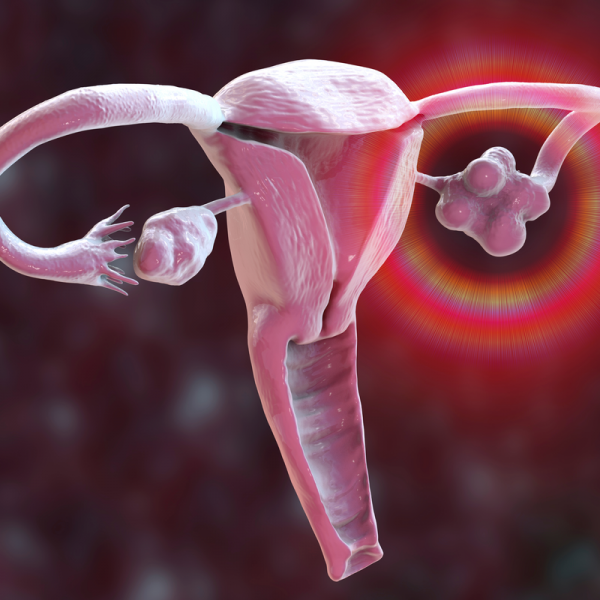
What is an ovarian cyst?
An ovarian cyst, or ovarian cyst, is a cavity in the ovaries that can be filled with fluid or tissue. In most cases, an ovarian cyst does not cause any symptoms and does not need any treatment, as it often disappears on its own. The ovarian cyst is often only a few millimetres to centimetres in size and can either be congenital or develop over time under certain conditions.
Under what conditions does an ovarian cyst develop?
If the ovarian cyst is not congenital, it often develops during puberty or the menopause. Both phases of life are associated with strong hormonal fluctuations, which can stimulate cyst growth. In rare cases, the growth of ovarian cysts can also be stimulated by hormone therapy or by hormonal imbalances caused by disease.
What symptoms can an ovarian cyst cause?
Once it reaches a certain size, the ovarian cyst can cause pain in the abdomen and/or menstrual problems such as irregular bleeding, bleeding that lasts an unusually long time or bleeding that lasts an unusually long time. Some women may not have menstrual periods at all or may have persistent spotting. In very rare cases, an ovarian cyst can cause fertility problems.
How is an ovarian cyst diagnosed?
After taking a medical history, the gynaecologist will palpate the patient for any enlargement of the ovaries. The diagnosis can be confirmed by means of an abdominal endoscopy (laparoscopy). In most cases, however, an ovarian cyst is diagnosed during a screening ultrasound examination (sonography) if the cyst has not previously caused any symptoms.
How is an ovarian cyst treated?
The treatment of an ovarian cyst depends on its size and type. If it is asymptomatic, the doctor will probably first monitor its growth, as it is possible that the cyst will regress on its own. Drug therapy with hormones, such as the contraceptive pill, may also be ordered to help it regress.
A larger ovarian cyst, especially if it causes discomfort, is usually removed. This can be done easily by laparoscopy, for example. Surgical instruments and a camera are brought into the abdominal cavity through small incisions in the abdominal wall so that tissue samples can be taken or the cyst can be removed completely. In order to exclude the possibility that the cyst is malignant, a biopsy of the ovarian cyst should be performed, especially in women over the age of 40. However, in more than 90 per cent of all cases, surgical removal of the ovarian cyst is not necessary at all, as it causes neither discomfort nor complications and heals on its own.
| Pathogen | Source | Members - Area |
|---|---|---|
| Ovarian cyst | BIO | As a NLS member you have direct access to these frequency lists |
| Ovarian cyst | BIO | As NLS member you have direct access to these frequency lists |
| Ovarian cyst | CAFL | As an NLS member you have direct access to these frequency lists |
| Ovarian cyst | CAFL | As an NLS member you have direct access to these frequency lists |
| Ovarian cyst | CAFL | As an NLS member you have direct access to these frequency lists |
| Ovarian cysts | EDTFL | As an NLS member you have direct access to these frequency lists |
| Ovarian cyst | VEGA | As an NLS member you have direct access to these frequency lists |
| Papillomavirus cyst | XTRA | As an NLS member you have direct access to these frequency lists |
| Papillomavirus cyst | XTRA | As an NLS member you have direct access to these frequency lists |
